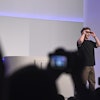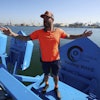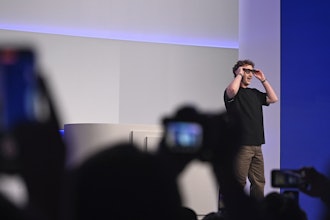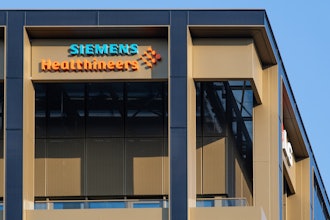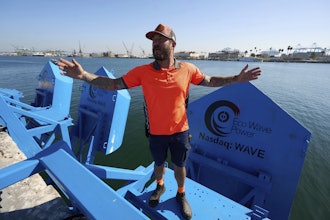Fruit Helmets & Alligator Pants
BMW wants to protect your head using fruit rinds.
It's odd how some objects found in nature have such great shock absorption. Consider the pomelo fruit, which can fall from a tree with little to no damage, both to the rind or the delicate fruit inside. Humans are not so resilient.
We are not going to be wearing helmets everywhere we go (though some of us should), but groundbreaking new work out of the BMW-led Bio-Inspired Safety Systems (BISS) Consortium is hoping to take advantage of a growing safety demand predicted by tech-forecasting experts.
The consortium, made up of seven partners ranging from tech companies and sporting goods manufacturers to institutes of textile technology and polymer engineering, has created new prototypes based off of natural models that have yielded products that are 20 percent lighter, tougher, and more stable than commonly used materials. That means new helmets modeled after fallen fruit, and protective gear for bikers that is modeled after the way an alligator’s protective armor distributes force to neighboring scales.
BMW is hoping the research leads to better safety gear for workers that is inspired by bio-engineering. For example, gloves that have a breathable, light-weight design yet can still protect workers from sharp-edged car parts.
But back to the rind. The pomelo rind is an auxetic material, which means that is responds differently to pressure than conventional structures. Instead of giving way and becoming thinner under pressure, auxetic material compresses and hardens. It even becomes thicker when stretched.
The researchers took what they found in these natural, auxetic structures, and are using it for things such as more protective helmets. They even found a way to make it with 3D printing methods since manufacturability is one of the greatest obstacles standing in the way of such designs until now.
Helmets have never seemed to be more important as a new study out of the University of Helsinki says that traumatic brain injury can be associated with dementia in working-age adults.
A New Helicopter Every 40 Days
Airbus's Helicopters Division wants to bring more agility, quality, standardization, and competitiveness to the way that helicopters are made. As the company readies a new H160 final assembly line to come online, the company took a chance to show off how the H160 is the first helicopter to be entirely created digitally — from design to production, and even customer support.
The company has done all of this at the same time that it cut lead-time in half. The helicopter is now manufactured in sections dubbed major component assemblies (MCAs), which are produced and assembled around the globe in parallel. Blades are made in France, the rear fuselage is made in Spain, and the front and central fuselages made in Germany.
These MCAs are plug-and play, so customers can customize specific configurations. And all of this work has made is possible to manufacture a fully functional H160 helicopter in 40 days.
Engineer Builds Electric Flying Chair
Engineer Alex Borg has designed his own vertical take-off and landing (VTOL) aircraft, and it is loud, if not impressive.
According to an article from New Atlas, Borg's new project, which is chronicled on AmazingDIYProjects, is called the chAIR and it's propelled by 76 electric rotors. It takes 80 batteries to get this thing in the air for all of 12 minutes.
His first flight only lasted eight minutes, but landed much better than his eight-rotor version that he crashed last year. According to Borg, he was surprised by the amount of vibration he experienced in his seat, which was made out of Styrofoam and a piece of fishing pole. He also noted that he chose not to fly any higher because, "I do not believe in reincarnation."
I must say that while the design has changed drastically, his safety gear hasn't.
This is Engineering By Design with David Mantey.

